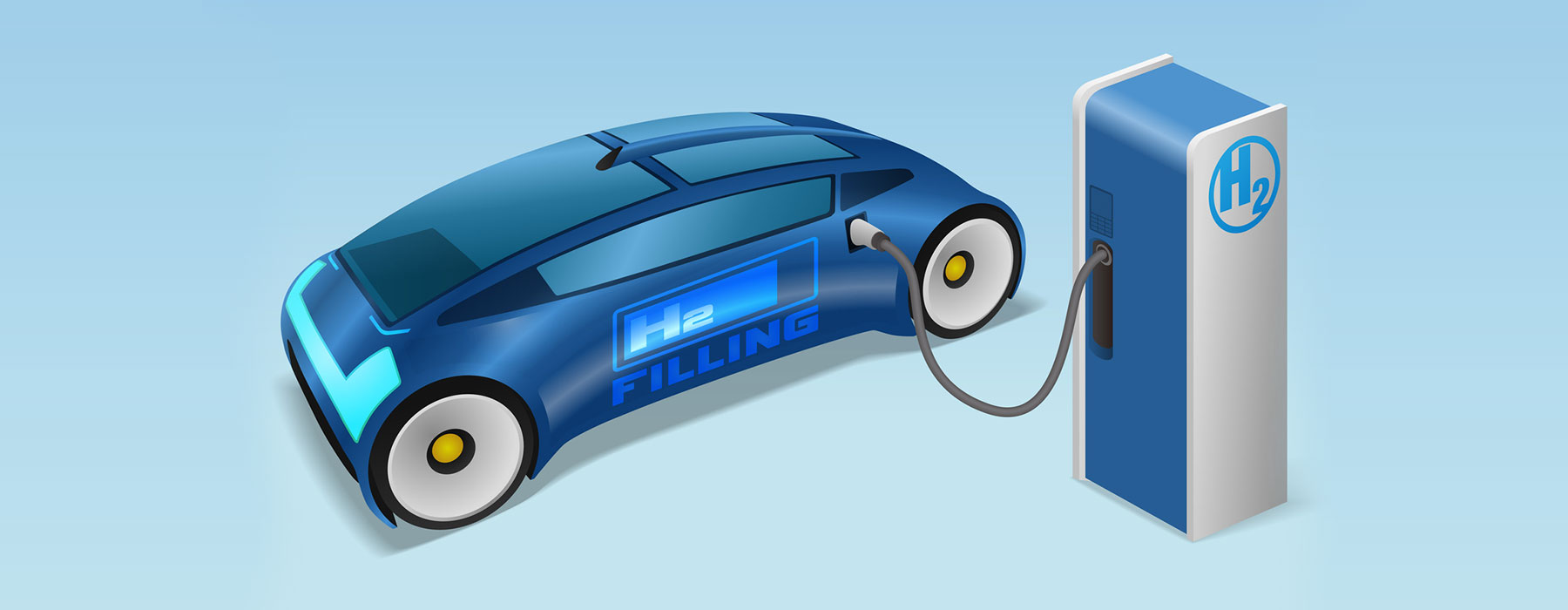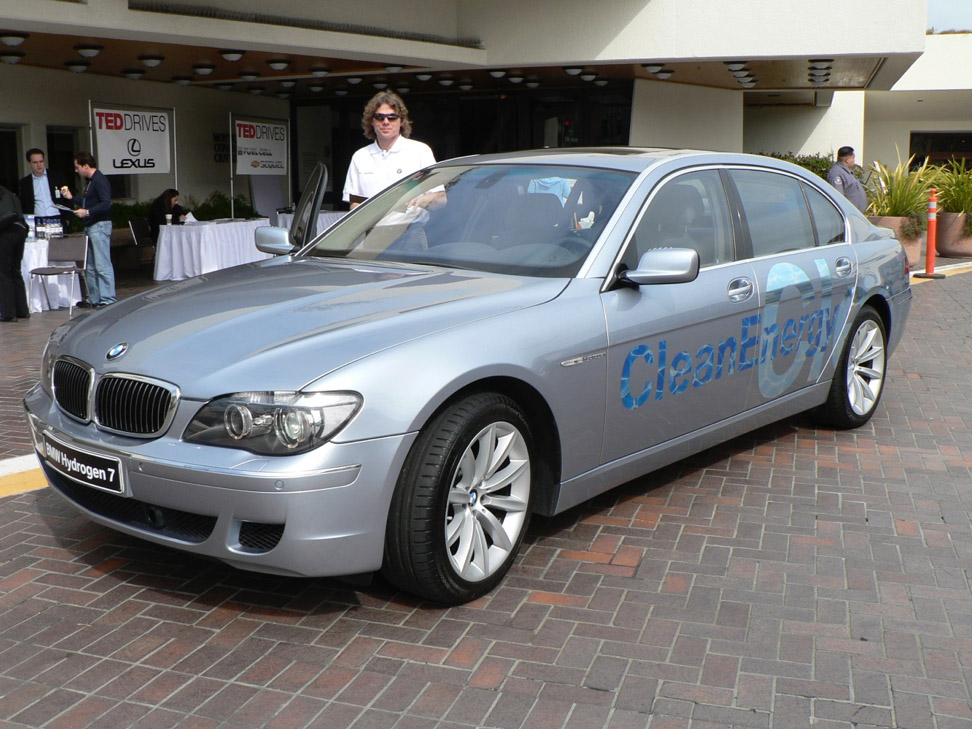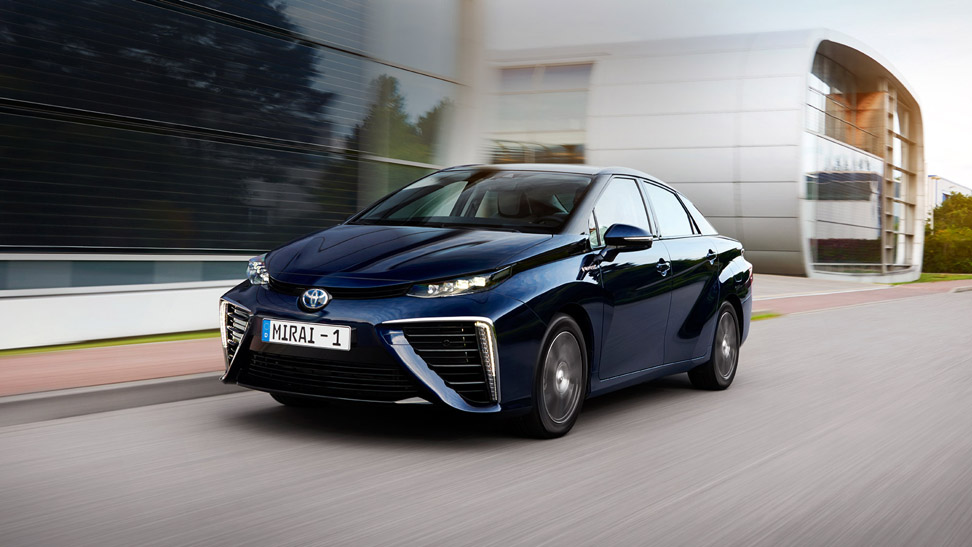Car on hydrogen. Is it time to say goodbye to gasoline?

Hi, Habr! You have written very interesting and fair comments to our previous article on hydrogen energy, the answers to which you can find in this material on the use of hydrogen in cars.
Indeed, in comparison with gasoline, hydrogen is one continuous problem: it is very difficult to store and difficult to obtain, it is explosive, and hydrogen cars are several times more expensive than gasoline. But at the same time, hydrogen is considered the most promising type of alternative fuel for transport. In addition, investors are ready to spend multibillion-dollar investments in the production of hydrogen cars.
Gasoline verdict already signed
According to the latest report of the BP Statistical Review of World Energy 2018 , the world's proven oil reserves amount to 1.696 billion barrels, which, if the current level of consumption is maintained, will last for fifty years. Undiscovered oil reserves, presumably, will give us another half a century of hydrocarbon energy, but the cost of its production may be such that oil will simply become unprofitable in comparison with other energy sources. When deposits with convenient production are exhausted, the price of raw materials will automatically go up: if now the cost of extracting a barrel in Russia is estimated at $ 2-3 by some (according to alternative estimates, at $ 18 ), then for shale oil it is already $ 30-50. And humankind has a real prospect to switch to offshore and arctic oil production, the price of which will be even higher.
')
A surge of interest in electric transport in the 70s of the 20th century arose just against the background of an abrupt rise in oil prices due to the political crisis - there was no shortage of raw materials, but a fourfold price increase instantly made gasoline cars and oil energy a luxury.
And more controversial obstacles stood in the way of petrol cars - concern for the environment in cities and countries where car exhaust has become a problem. Because of this, for example, Germany adopted a resolution banning the production of cars with internal combustion engines since 2030. France and the United Kingdom promise to abandon the hydrocarbon fuel until 2040. The Netherlands - until 2030. Norway - until 2025. Even India and China expect to ban sales of diesel and gasoline cars from 2030. Paris, Madrid, Athens and Mexico will prohibit the use of diesel vehicles from 2025.
Hydrogen combustion in internal combustion engines
Combustion of hydrogen in a conventional internal combustion engine seems to be the easiest and most logical way to use gas, because hydrogen is flammable and burns without residue. However, due to the difference in the properties of gasoline and hydrogen, it was not so easy to transfer internal combustion engines to a new type of fuel. Difficulties arose with the long-term operation of engines: hydrogen caused overheating of valves, piston group and oil, because of the heat of combustion three times greater than that of gasoline (141 MJ / kg versus 44 MJ / kg). Hydrogen showed itself well at low engine speeds, but as the load increased, detonation arose. A possible solution to the problem was the replacement of hydrogen by a gasoline-hydrogen mixture, the concentration of gas in which dynamically decreased as the engine speed increased.

The dual-fuel BMW Hydrogen 7 in the back of the E65 burns hydrogen in the engine instead of gasoline
Source: Sachi Gahan / Flickr
One of the few production cars where hydrogen was burned in the engine like other fuels was BMW Hydrogen 7, which came out only 100 copies in 2006–2008. The modified six-liter ICE V12 worked on gasoline or hydrogen, switching between types of fuel occurred automatically.
Despite the successful solution to the problem of overheating of valves, this project is still put a cross. First, when burning hydrogen, engine power dropped by about 20% - from 260 liters. with. on gasoline up to 228 l. with. Secondly, 8 kg of hydrogen was enough for only 200 km of run, which is several times less than in the case of diesel elements. Thirdly, Hydrogen 7 appeared too early - when "green" cars were not yet so relevant. Fourth, there were persistent rumors that the US Environmental Protection Agency did not allow Hydrogen 7 to be called a car without harmful exhaust — due to the nature of the engine, engine oil particles entered the combustion chamber and ignited there with hydrogen.

Mazda RX-8 Hydrogen RE - the case when hydrogen has ruined the entire dynamics of the rotary engine. Source: Mazda
Even earlier, in 2003, the Mazda RX-8 Hydrogen RE dual-fuel was introduced, reaching customers only by 2007. When switching to hydrogen from the power of the legendary rotor RX-8, there was no trace left - the power dropped from 206 to 107 liters. with., and the maximum speed - up to 170 km / h.
BMW Hydrogen 7 and Mazda RX-8 Hydrogen RE were the swan song of hydrogen engines: by the time these vehicles appeared, it had finally become clear that it was far more efficient to use hydrogen in well-known fuel cells than to burn.
Fuel cells in cars
The first successful experiment to create a vehicle on a hydrogen fuel cell can be considered a Harry Karl tractor, built in 1959. True, replacing a diesel with a fuel cell reduced the tractor power to 20 liters. with.
In the past half century, hydrogen transport has been produced in pieces. For example, in 2001, a Generation II bus appeared in the United States, for which hydrogen was produced from methanol. Fuel cells created power up to 100 kW, that is, about 136 liters. with. In the same year, the Russian VAZ presented the Niva on hydrogen elements, known as Antel-1 . The electric motor gave out power up to 25 kW (34 hp.), Accelerated the car to a maximum of 85 km / h and worked 200 km on one gas station. The only car produced was “laboratory on wheels”.

Russian car on hydrogen fuel cells - at the time the technology went beyond the design. Source: AvtoVAZ
In 2013, Toyota shook the automotive world, introducing the Mirai hydrogen fuel cell model. The uniqueness of the situation was that the Toyota Mirai was not a concept car, but a car ready for serial production, sales of which began a year later. Unlike electric vehicles on batteries, Mirai itself generated electricity for itself.

Toyota Mirai. Source: Toyota
The electric front-wheel drive Mirai has a maximum power of 154 liters. pp., which is not much for a modern electric car, but not bad compared to hydrogen cars of the past. The theoretical range of 5 kg of hydrogen is 500 km, the actual - about 350 km. Tesla Model S on the passport can pass 540 km. That's just to fill a full tank of hydrogen takes 3 minutes, and the Tesla battery charges up to 100% in 75 minutes at the Tesla Supercharger stations and up to 30 hours from a standard 220V outlet.
Direct current from 370 Mirai hydrogen fuel cells is converted to alternating, and the voltage increases to 650 V. The maximum speed of the car reaches 175 km / h - a bit compared to hydrocarbon fuel, but more than enough for everyday driving. For the energy reserve, a 21 kW ∙ h nickel-metal hydride battery is used, to which the excess from the fuel cells and the energy of regenerative braking is transferred. Considering Japanese realities, in which populated areas can suffer from an earthquake at any time, a CHAdeMO connector is installed in the trunk of the Mirai 2016 model year, through which you can organize electricity to a small private house, which makes the car a generator on wheels with a maximum capacity of 150 kW h .
By the way, in just a few years, Toyota managed to significantly reduce the mass of the generator: if at the beginning of the century in prototypes it weighed 108 kg and produced 122 liters. With., then in the Mirai fuel cell is twice as compact (volume 37 liters) and weighs 56 kg. It is fair to add to this 87 kg of fuel tanks.
For comparison, the popular modern Volkswagen 1.4 TSI turbo is similar to the Mirai power of 140–160 hp. It is famous for its “lightness” due to the aluminum construction - it weighs 106 kg plus 38–45 kg of gasoline in the tank. By the way, the Tesla Model S battery weighs 540 kg!
For 4 km of run, Mirai produces only 240 ml of distilled, relatively safe to drink water - enthusiasts who have tried the “exhaust” of Mirai reported only a slight taste of plastic.
Drinking water drained from Mirai is safe, although at first the spectacle is shocking
In the Toyota Mirai, two tanks for hydrogen of 60 and 62 liters are installed at once, in the total containing 5 kg of hydrogen under a pressure of 700 atmospheres. Toyota has been developing and producing hydrogen tanks for 18 years already. Mirai tank is made of several layers of plastic with carbon fiber and fiberglass. The use of such materials, firstly, increased the storage resistance to deformation and penetration, and, secondly, solved the problem of re-fueling metal, due to which steel tanks lost their properties, flexibility and microcrackiness.

The structure of the Toyota Mirai. The electric motor is located in front, the fuel cell is hidden under the driver’s seat, and tanks and a battery are installed under the rear row and in the trunk. Source: Toyota
What are the prospects?
According to Bloomberg estimates , by 2040, cars will consume 1,900 terawatt hours instead of 13 million barrels per day, that is, 8% of electricity demand as of 2015. 8% is nothing if you consider that now up to 70% of the oil produced in the world is spent on producing fuel for transport.
The prospects for the battery electric vehicle market are much more obvious and impressive than in the case of hydrogen fuel cells. In 2017, the electric car market was $ 17.4 billion, while the hydrogen car market was estimated at $ 2 billion. Despite such a difference, investors continue to be interested in hydrogen energy and finance new developments.
An example of this is the 2017 Hydrogen Council (Hydrogen Council), which includes 39 major companies such as Audi, BMW, Honda, Toyota, Daimler, GM, Hyundai. Its goal is to research and develop new hydrogen technologies and their subsequent introduction into our lives.
Source: https://habr.com/ru/post/430372/
All Articles